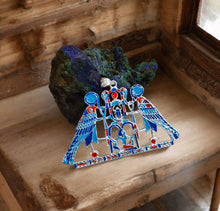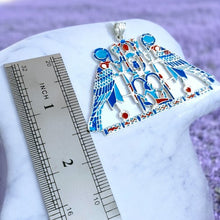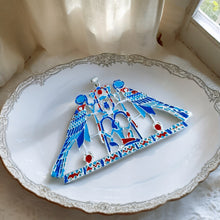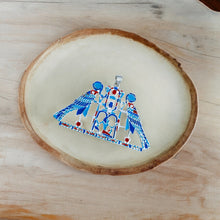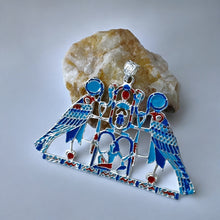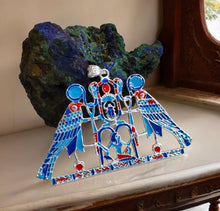
The God Horus Amulet Silver Pendant Necklace: Inspired by ancient Egyptian mythology, this pendant embodies the protective spirit of Horus, the falcon-headed deity symbolizing kingship and divine protection since antiquity.
- History: Ancient Egyptian deity symbolizing kingship, sky, and protection.
- Spiritually: Represents power, protection, and good health.
- Talisman: Believed to ward off evil and bring blessings.
- Handmade: Crafted with care, each piece unique.
- Healing: Thought to bring spiritual strength and resilience.
- Material: Sterling silver for durability and purity.
- Symbolism: Eye of Horus for protection and insight.
- How to Wear: Fits any chain up to 5mm; versatile for daily wear.
History Side For Those Who Are Interested
History of the Egyptian God Horus
Horus is one of the most significant deities in ancient Egyptian mythology. His importance spans various epochs in Egyptian history, from the Predynastic Period through the Greco-Roman period, reflecting his enduring influence and central role in Egyptian religion and culture.
Origins and Early Depictions
Horus is traditionally depicted as a falcon or a man with the head of a falcon, symbolizing his dominion over the sky. His origins trace back to the Predynastic Period (c. 6000-3150 BCE), where falcon iconography is prevalent. Initially, Horus was worshiped as a local god in Upper Egypt. The earliest references to Horus are found in Hierakonpolis, where he was revered as the sky god and the divine protector of the pharaoh.
Horus in the Early Dynastic and Old Kingdom
During the Early Dynastic Period (c. 3150-2613 BCE), Horus became associated with the ruling pharaohs, who were considered his earthly embodiment. This association is evidenced by the Horus name, one of the five names in the pharaoh’s titulary. The Horus name linked the living king with the divine falcon, reinforcing the pharaoh's divine right to rule.
In the Old Kingdom (c. 2613-2181 BCE), Horus's mythological role expanded. He became intricately associated with the Osiris myth, where he is depicted as the son of Osiris and Isis. After Osiris was murdered by his brother Seth, Horus avenged his father's death and reclaimed the throne of Egypt. This myth symbolized the eternal struggle between order (Ma'at) and chaos (Isfet), with Horus representing the triumph of order.
Horus in the Middle and New Kingdoms
In the Middle Kingdom (c. 2055-1650 BCE), Horus continued to be a central figure in royal ideology and religious practice. He was often depicted in temple reliefs and royal inscriptions, symbolizing the divine legitimacy of the pharaoh.
The New Kingdom (c. 1550-1070 BCE) saw a flourishing of Horus worship, with significant temples dedicated to him, including the Temple of Edfu, one of the best-preserved temples in Egypt. This period emphasized his role as a war god and protector of the pharaoh. Horus was also syncretized with other deities, such as Ra (as Ra-Horakhty), emphasizing his solar attributes.
Late Period and Greco-Roman Influence
During the Late Period (c. 664-332 BCE) and the subsequent Greco-Roman period (332 BCE-395 CE), Horus's worship remained prominent. He was integrated into the Hellenistic pantheon and identified with the Greek god Apollo. Temples such as Edfu continued to be active centers of worship, where the story of Horus's battles with Seth was ritually reenacted.
Iconography and Symbols
Horus is most commonly depicted as a falcon or as a man with a falcon's head, often wearing the double crown of Upper and Lower Egypt, signifying his role as the unifier of the two lands. The Eye of Horus (Wedjat) is a significant symbol associated with him, representing protection, health, and restoration. According to myth, Horus's eye was injured during his battles with Seth and subsequently healed, making it a powerful amulet.
Legacy
Horus's legacy extends beyond his religious significance. He represents kingship, victory, and the enforcement of law and order. His mythology profoundly influenced Egyptian culture, art, and religious practices, and his symbols remain recognized in modern times as emblems of protection and royal power.
The story of Horus reflects the values and beliefs of ancient Egyptian society, emphasizing the cyclical nature of life and the perpetual struggle between order and chaos. His worship, evolving through thousands of years, highlights his adaptability and enduring importance in the rich tapestry of Egyptian mythology.









